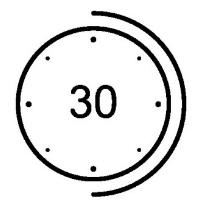Sing
Sing and Have Fun


















Visual, auditory and kinaesthetic learner? Music has it all.
Training children in music at an early age exercises higher brain functions, including complex reasoning tasks. In other words, the pathways we use for spatial reasoning are similar to the music pathways in our brain.
The more we learn the more our neurons are stimulated to grow and contain more information. In fact, a child’s musical development seems to be very similar to language development. It follows a predictable sequence and includes things like learning to sing in tune and marching to a particular beat. Singing together creates a feeling of safety and makes learning much easier.
- Social/Emotional skills
Sharing nursery rhymes provides a safe and secure bond between parents and children. That is to say, funny nursery rhymes allow children to develop a sense of humor.
- Express emotions
When children act out the nursery rhyme stories they hear, they learn to imagine, be creative, and express themselves.
- Improve self-esteem
There is no right or wrong, different types of music nurtures self-esteem and encourages creativity, self-confidence, and curiosity.
- Develop listening skills
Music encourages the ability to listen and concentrate while developing speech, pitch, a good sense of rhythm, dynamics and melody.
- Improve balance, coordination and develop tongue muscles
When they hear music, children respond naturally with body movements. Music develops tongue muscle, teaches children about what their bodies can do. As a result, it is giving them a sense of direction and rhythm.
- Develop creativity
This is a great benefit for the children who are exposed to music: they can change the words or rhymes, they can even change the rhythm of the songs. Children can create their own nursery rhymes and melodies and play them accompanied by their favourite instruments.
- Language development
The words children hear are made up of vowels and consonants. Above all, children have fun with them in a non-judgemental way, experiment with pitch, volume, and voice inflexion, as well as the rhythm of language. The rhymes, the poems and nursery rhymes help children learn new vocabulary. During a music lesson, children learn how to articulate the words and modulate their voices while their brains are firing away.
Learning an instrument requires keeping a steady beat. Thus, clapping hands, stamping feet, and using rhythm instruments in time to music develops important pre-reading skills. Similarly, young children recognize words, sounds, rhythms, tones, and pitches long before they talk, sing, or dance. So, the more music your children have in their lives, the better they will speak and read.
- Maths skills / or cause – effect
A simple song can include basic math skills such as counting, repeating patterns, and sequencing. Firstly, nursery rhymes are patterns, they help children learn easy recall and memorization. Secondly, nursery rhymes usually tell a story with a beginning, a middle, and an end. Consequently, this teaches children that events happen in sequence, and they begin to learn how to understand stories and follow along. In addition, nursery rhymes use patterns and sequence, so children begin to learn simple math skills as they recite them. Moreover, many rhymes also use numbers, counting, and other math words that children need to learn, such as size and weight.








